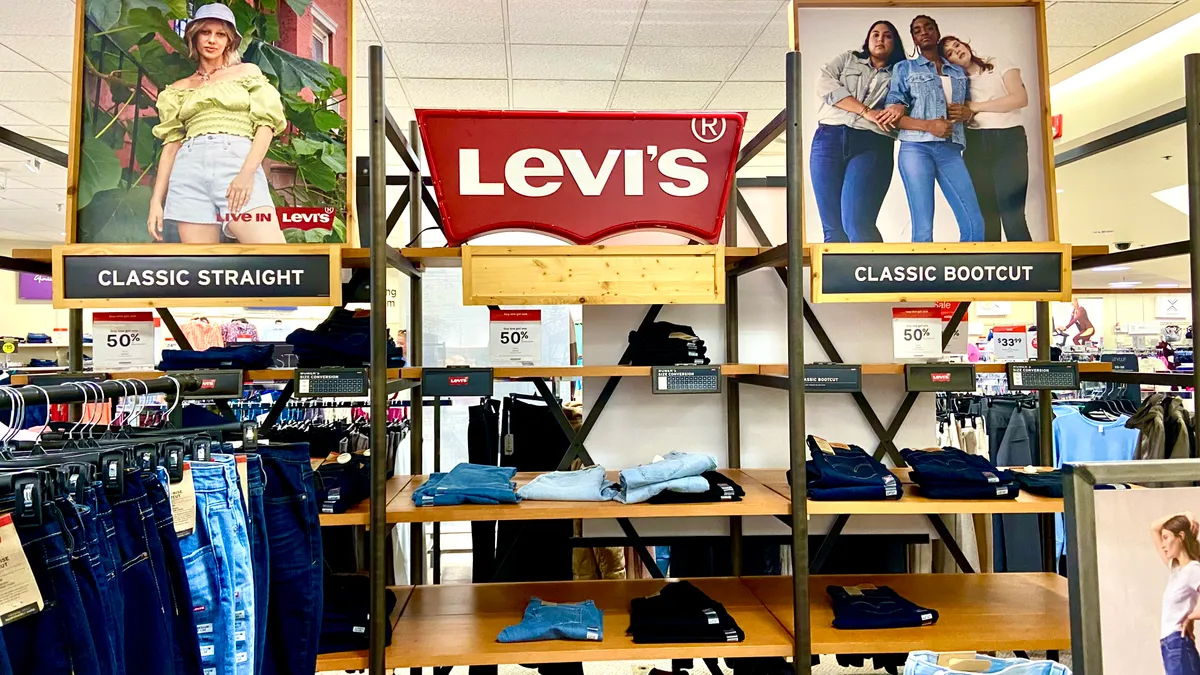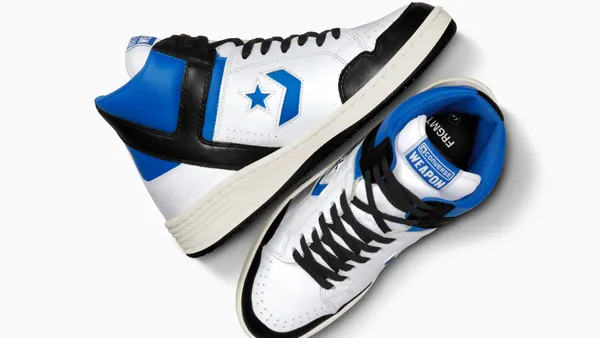Dive Brief:
-
At Levi’s during the second quarter, direct-to-consumer operations contributed to sales but hit margins. Net revenue fell 9% year over year, with DTC net revenues up 13% and wholesale down 22%.
-
Gross margin expanded by 60 basis points to 58.7%, offset in part by higher marketing and DTC expenses. Levi’s swung to a $1.6 million loss, from $49.7 million in net income a year ago.
-
The company expects its inventory situation to improve throughout the year, as it did from last quarter, and end up below 2022 levels by year end, per its press release. Year over year, total inventories rose 18% on a dollar basis and 8% on a unit basis.
Dive Insight:
Levi’s second-quarter results were largely in line with expectations, and CEO Chip Bergh said that demand for denim remains strong. On a dollar basis, the denim market in the U.S. in the past 12 months is up 12% compared to 2019, Bergh said on a conference call with analysts.
However, declining sales in the brand’s largest market, the U.S. — especially in wholesale and among lower-income consumers — led Levi’s to cut its guidance for the year. The company now expects revenue growth of between 1.5% and 2.5%, down from 1.5% to 3% previously, Chief Financial and Growth Officer Harmit Singh told analysts Thursday.
“Clearly the lower- or moderate-income consumer is being squeezed, and that is driving some of the big category dynamics,” Bergh said, adding that the company is seeing greater price sensitivity. Sales of Levi’s value brands, like its wholesale revenue, is down double digits, he said. The company is planning price cuts in its wholesale channel, which is contributing to its lowered revenue guidance.
Some consumers are “feeling the trade-offs of needing to pay for a summer vacation versus a new pair of jeans,” Bergh said, adding that the “moderate-income consumer is having to make some tough choices now.” The pressure on discretionary spending is expected to only grow in coming months, following the Supreme Court’s gutting of President Biden’s student debt forgiveness program.
GlobalData Managing Director Neil Saunders called the deterioration in the Americas “unnerving.”
“Some of this is being blamed on a planned shift in wholesale shipments which fell more squarely into the previous quarter compared to last year,” he said in emailed comments. “This is true to an extent, but on balance we believe much of the Americas decline is also a consequence of lower orders from third-party retailers as they react to weaker demand from their customers.”
Executives touted growth in the company’s direct-to-consumer sales, which includes e-commerce and company-run stores. In general, the emphasis on DTC makes sense, according to Saunders.
”However, it comes with costs attached. The capital needed for expansion and some of the additional marketing expense needed to nudge consumers to buy online are one of the reasons why expenses are up this quarter,” he said. “When stacked against lower revenue this has damaged the bottom line.”
Away from its signature denim assortment, Levi’s brands produced mixed results. Net revenue from its Dockers workwear brand fell 9%, while its Beyond Yoga brand, driven by DTC strength, rose 28%.
In a client note Friday, Wells Fargo analysts led by Ike Boruchow called Levi’s 2021 purchase of the athleisure brand a “savvy acquisition.”
Thanks to Beyond Yoga, Levi’s “is now playing in one of the highest growth subcategories within apparel (athleisure), and [Beyond Yoga] has high brand affinity and loyalty, which is gaining steam,” Boruchow said, noting that the brand’s sales have doubled over the past three years.















